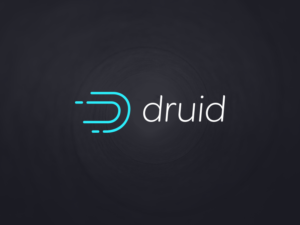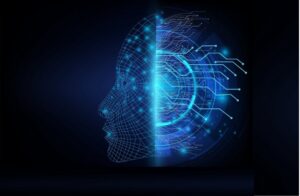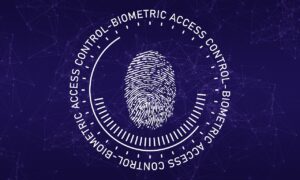Artificial intelligence is already very much present in eLearning platforms meant not only for life-long learning but formal education as well. Duolingo and Thinkster are only two examples of prominent, globally-applied AI eLearning platforms which are already far beyond their testing phases. Using such platforms and applying the same AI algorithms to other learning tools already deployed in formal education does present a moral quandary.
Will AI help students become better prepared for the job markets of tomorrow, or will it hinder their abilities and dull their instincts? The benefits of using AI in eLearning far outweigh such questions because there are too many people who need personalized learning assistance out there.
“As the population grows, more and more children and college students will need AI assistance because there aren’t that many teachers to cater to everyone’s needs.”
Let’s take a look at the benefits of incorporating AI into learning and eLearning and see how it can help make teachers’ jobs easier going forward.
Teacher’s Ability to Delegate to AI
Firstly, the people who will benefit the most from introducing AI into eLearning are existing educational professionals. While there aren’t enough teachers to cover the needs of every student on the planet, AI can help the existing teachers and make their jobs easier. AI can analyze student performance data, advise on grading, as well as chart a personalized learning flow for each student and present it to teachers.
While teachers themselves can do these things, they are time-consuming and take away from paying closer attention to students. This applies to both corporate and formal education, as AI can act as an assistant to teachers, coaches, and instructors. In some cases, AI can be used to moderate eLearning for long-distance students entirely, where teachers act only as supervisors and administrators.
Integration of Robotics-Centric Courses into Curriculums
Enabling students in K-12 and higher education institutions to learn about robotics via eLearning is an important benefit to consider in using AI for learning. Robotics can improve education in schools and students can learn about how it works via dedicated eLearning platforms, courses, and materials. In these instances, professors can act as mentors and intermediaries between students and the eLearning platforms they use in the classroom.
AI present in the eLearning platform can quickly deduct how accurately a student is replicating the exercises and models presented by the curriculum. AI would know if a student made mistakes in building a robot model, how to improve on it, and which lessons to present them with.
Personalized Flow of eLearning
What distinguishes us from artificial intelligence is the fact that each person is a unique individual. This means that traditional educational systems won’t be able to accommodate future generations in terms of educating them on the latest job market trends. Personalized eLearning powered by an AI curator will allow people to acquire new skills, hone existing ones, and stay in touch with industry trends.
All this would be possible at their own pace, meaning that there isn’t a strict schedule or exact learning routine to follow. Both talented individuals and slow learners would in theory be able to acquire the same skills and knowledge at their own paces. In informal eLearning, this is an amazing step in the right direction, where everyone would be free to pursue a career they feel passionate about.
Performance Analysis and Guidance
Performance evaluation has been a major point of contempt in formal education for many years for obvious reasons. What makes a teacher competent enough to accurately assess a student’s performance if they are working with dozens or hundreds of students simultaneously? With AI adapted to perform analysis and data extrapolation, this can become a non-issue. Teachers would have the final say in whether or not the AI has made the right call on individual students’ performance, for example.
This would save teachers endless hours of grading exams or reviewing papers, which they can instead spend curating the learning curriculum. In some instances, AI can take over entirely and advise students directly on what they should work on to improve their skills or knowledge. This can mostly be applied to informal eLearning platforms such as Udemy and Coursera and not on formal education. However, it still requires teachers to oversee students’ overall performance.
The Barrier to Incorporating AI in eLearning
Incorporating artificial intelligence into eLearning and formal institutions is easy when it comes to well-developed countries – what about the other side of the coin? Students around the world still struggle with basic educational needs such as having access to proper learning materials or even computer devices. According to a UNESCO survey, 43% of the world’s population still doesn’t have internet access, with 40% of people who have never been on the web.
World-renown organizations such as UNESCO, the EU, UNICEF, and other reputable entities can make long-distance formal education more possible. By integrating AI into eLearning platforms, the need for professional teachers is nullified and more students will be able to study effectively. Using AI to fill in for teachers would make the deployment of formal long-distance learning more rapid and efficient. This would make K-12 education in the African, South American, and Asian countries more accessible, viable, and worthwhile.
Future of AI in eLearning (Conclusion)
AI is already in active development and deployment in K-12 education, such as in the case of Carnegie Learning, which provides personalized AI learning. While mass adoption of AI in eLearning may be years off, important steps are made toward making it an industry standard. With AI powering eLearning platforms, people who want to learn new skills or make up for missed formal education will be able to do so.
Even though socioeconomic barriers do exist when it comes to AI integration, the joint efforts of large international NGOs and educational institutions will continue to eliminate them. There’s no doubt that AI will become the norm in both learning and eLearning down the road – we need only get there as a society.
~ Jessica Fender is a copywriter and blogger at GetGoodGrade with a background in marketing and sales.










